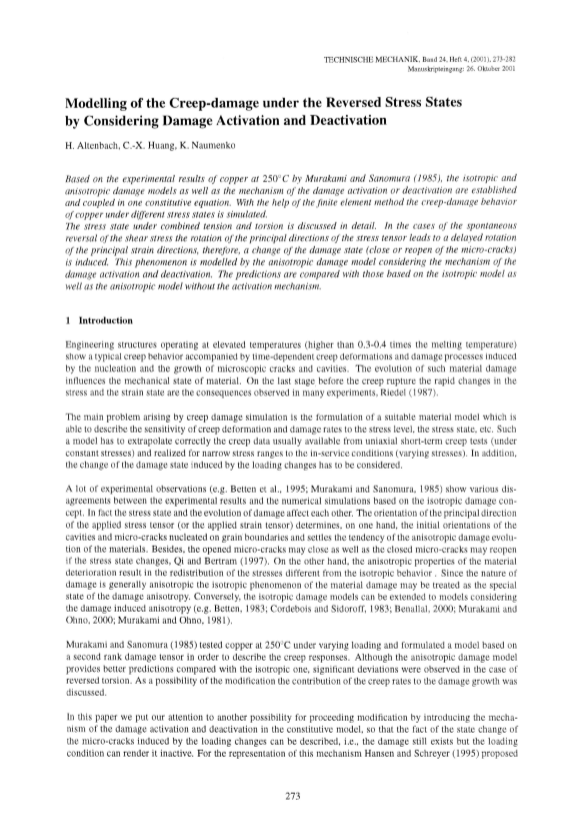Modelling of the Creep-damage under the Reversed Stress States by Considering Damage Activation and Deactivation
Abstract
Based on the experimental results of copper at 2500C by Murakami and Sanomura (1985), the isotropic and anisotropic damage models as well as the mechanism of the damage activation or deactivation are established and coupled in one constitutive equation. With the help of the finite element method the creep-damage behavior of copper under different stress states is simulated.
The stress state under combined tension and torsion is discussed in detail. In the cases of the spontaneous reversal of the shear stress the rotation of the principal directions of the stress tensor leads to a delayed rotation of the principal strain directions, therefore, a change of the damage state (close or reopen of the micro-cracks) is induced. This phenomenon is modelled by the anisotropic damage model considering the mechanism of the damage activation and deactivation. The predictions are compared with those based on the isotropic model as well as the anisotropic model without the activation mechanism.





